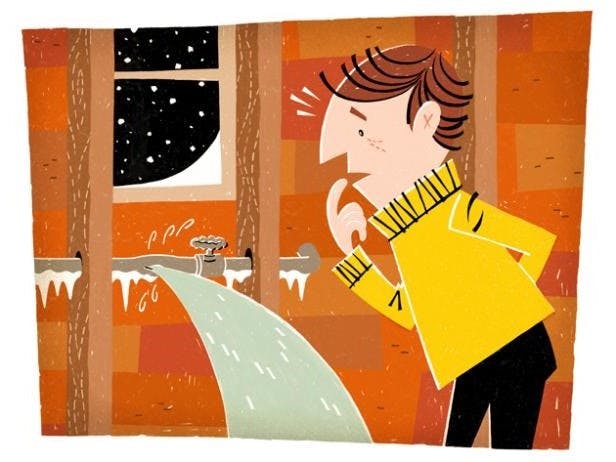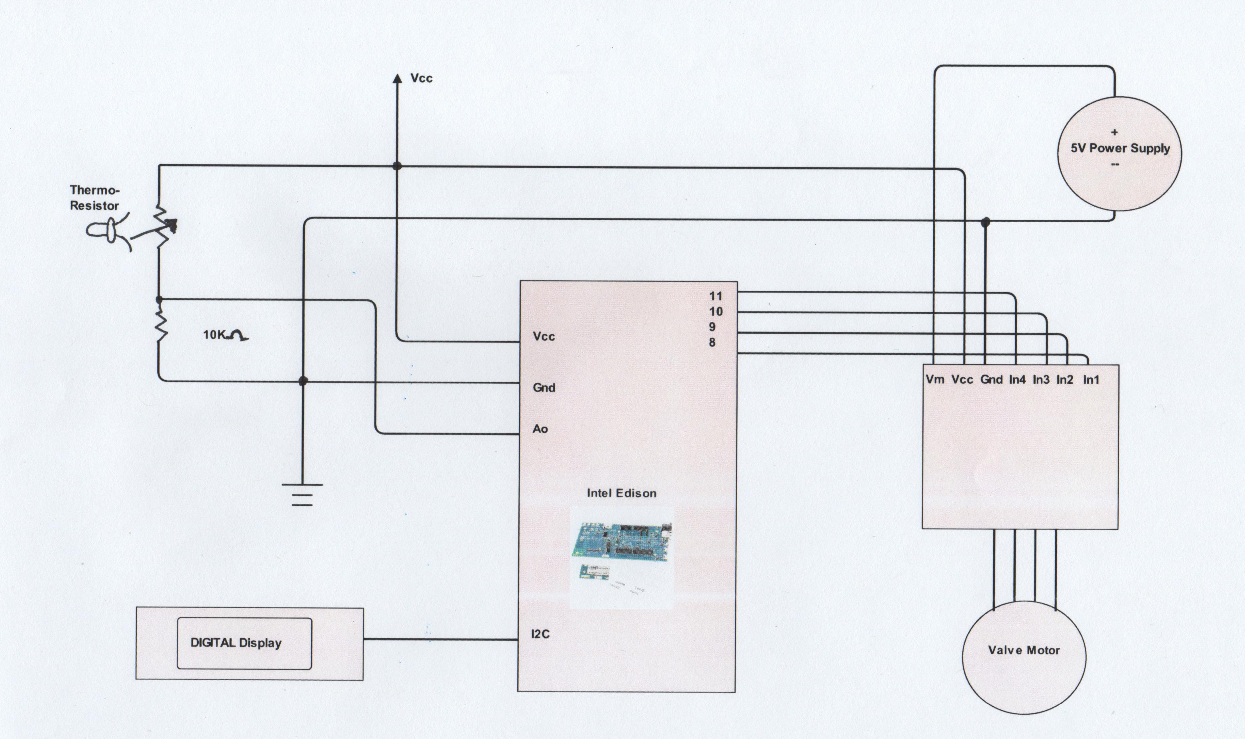Back story / Genesis
Back in the 1980’s, my family moved to Denver from Los Angeles and my Dad, not being used to the cold winters, wasn’t aware that you needed to drip faucets in order to prevent water pipes from freezing. One winter evening, our water pipes froze and burst, causing extensive water damage in our basement. After all the costly repairs, a valuable lesson was learned about the importance of dripping faucets during the freezing winter season. – Personal story shared by Blue Team member, Crystal Gannon
What could have prevented this?
This got me thinking: What if there was a way to detect when the water in the pipes was starting to freeze and if they were, the faucet furthest away would automatically turn on, draining enough standing freezing water, and allow the water temperature to rise to a safer level? Afterwards, the facet would automatically turn off, dripping the faucet just long enough to prevent the water in the pipes from freezing, and prevent water waste.
Why should we care?
Expensive Insurance Claims
- Water damage from broken water pipes ranks second for insurance claims in the United States (with the first being hurricane damage). – according to the Insurance Information Network of California
- Approximately 93% of frozen/broken water pipes are preventable. – according to the Insurance Information Network of California
- The average cost for water damage from broken water pipes is $20,000 per claim - according to the American Insurance Association
As broken water pipes are one of the most preventable claims, insurance companies are looking for ways to push property owners to remember to drip their faucets when the temperatures outside drops below freezing and to keep their thermostats at 55 degrees Fahrenheit (12.8 Celsius) or higher.
Water Conservation
- Dripping the faucet for a couple of days as a preventive measure or while you go on vacation during a cold winter (when you don't know what the actual water temperature in the pipe is going to be) may unnecessarily waste a lot of water.
- One home, dripping one faucet at a rate of 20 drips/minute, during a 24-hour period, will have dripped 2 gallons (9 liters) of water. – according to the online calculator from the United States Geological Survey (USGS)
- For a small apartment complex at 50 units, 126 gallons (480 liters) would have been dripped.
- For a bigger community with 500 homes, we are now looking at 1,268 gallons (4,800 liters, or over 5 tons) of water dripped in one day.
- Finally at a city level of 1 million homes, we are looking at 2,536,327 gallons (9,600,000) liters of dripped water.
That is a lot of water, and with areas of the world experiencing water shortages (such as the western part of United States), water conservation needs to be a way of life.
Features of our system
Keeping this in mind, the Save the Water Pipes project will address a way to prevent water pipes from freezing by using the least amount of water possible.
- A water temperature sensor is place inside a water pipe at the point most likely to experience freezing temperatures.
- As the water temperature inside the pipe is read, a web site and an LCD screen, located near the water sensor, will display what the temperature is.
- When the temperature is above 38 degrees Fahrenheit (approximately 3.333 degrees Celsius), the reading will display green, for a status of good.
- When the temperature drops below 38 degrees Fahrenheit, the reading will display yellow for a status of warning.
- Once the water temperature in the pipe goes below 33 degrees Fahrenheit (approximately 0.556 degrees Celsius), the display screen will show red for critical and a stepper motor will turn on a water faucet automatically. This will allow the water to run through the pipes and out of the faucet before it gets a chance to freeze, alleviating the pressure that was starting to build.
- Once the pipe temperature returns to a level above 33 degrees Fahrenheit, the faucet will automatically close. That way, the faucet will let water run on an “as needed" basis, instead of having the water drip all night, and through the day.
- The user will be notified when the faucet is turned on or off, by looking at the status in the website.
- The website also provides a way for a homeowner or renter to check on their water pipe status while they are on vacation.
Overall, our project will provide a solution to the second biggest insurance claim in the US, while conserving water.
See video for a demo of our system
Note: the "Blue Team" has made several major enhancements to the "Save the Water Pipes" System for the final round of competition of the China-US Young Maker contest. To read about these enhancements and see updated videos and pictures, go here:
https://sunfishempire.wordpress.com/2016/08/27/save-the-water-pipes-project-wins-excellence-award-in-iot-china-contest/














Comments